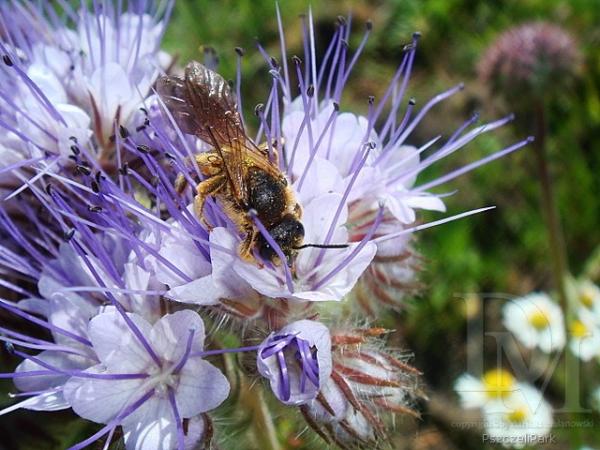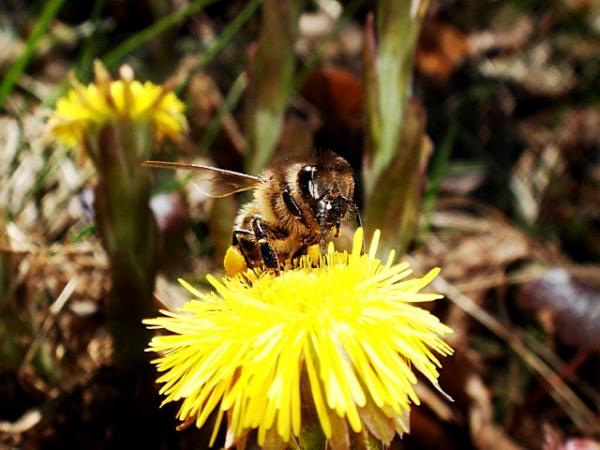Own Apiary
The choice of location (apiary) for organic bee-keeping is one of the many requirements with which its owner must comply. This requires to select not only the place where they will be located bee families, but to explore the whole region and to the requirements specified in regulations.
Place, which will be located bee families must meet the very requirements relating on the one hand with opportunities for the development of bee families, the other with opportunities for obtaining only pure organic apiculture products. These requirements are mandatory and apply to:
* apiary is located outside the settlement and its size, consistent with the number of bee families by providing a 10-12 sq. m for each of them. When the bee families are – over 100-120 they are divided in smaller groups (separate apiary) in the same region, but no less than 2 kilometers between groups
* apiary is far from industrial establishments from livestock farms and enterprises polluting the environment (gas, smoke, etc.).
* place fixed for apiary is quiet, reserved by the winds, dry and ottsedlivo, families with opportunities to be located in eastern or southeastern exposure, away from large pools.
* apiary is surrounded with no access to outsiders and animals with opportunities to pass him on the vehicles.
* honey vegetation to be as close as possible to Pchelina for a recovery from the bees without having to move them (mobile beekeeping is not permitted). In the urgency of the move is requested permission from the authority issued the certificate.
* terrain of apiary is aligned (terrace) planted with greater distance from each other trees to provide shade for the bee families. Before any bee family provides playground, and it is placed on stand about 20-25 cm high with a slight tilt forward.
* a distance of 3 kilometers in the region have no other apiary.
* relief, preferably are hilly and semi-truncated areas
* the presence of various honey plants, mainly of wild species, and cultural honey plants to be grown in organic way. This vegetation is not further than 3 km from the apiary and it no poisonous plants, prevailing in certain periods of bloom.
* honey vegetation to provide continuous and without major disruptions throughout the grazing period of active development of bees and have at least one major grazing.
Establishment of apiary for clean products and organic beekeeping is through propagation of apiculture own families or purchase of such biological apiary and purchase of bees apiary of non-biological families, but only authorized the certified organization. In these cases (where families do not come from organic apiary) is passing through a period of transition, for the layers is 1 year and for swarms – about 1 month. The transitional period for ordinary families is one year. In these cases (and swarms of apiculture families) for this transitional year is required full replacement a wax bases. The big problem is that the wax bases to be used in replacement of the framework must be made of wax from apiary with organic production. After authorization may be used by non organic wax production, but is derived from the lid of the framework of honey or spleens (construction frames).
These requirements imposed pchelaryat very good to know regulations and strictly comply with them. Furthermore pchelinat must be registered and bee families identified under Regulation. Separately made a written request to certified organization which will carry out the relevant controls.
Immediately after the certification of production started keeping records of the related documentation of all activities of the apiary.
How to Take Good Care of an Apiary
A place where beehives of bees are kept is called apiary. It is also sometimes refer to as the bee yard. On the other hand, people who are engaged in keeping bees are known as apiarists, they are also popularly known as beekeepers today. Since it is a place for keeping bees, an apiary should be well-maintained and protected from the various harmful elements such as harsh squalls, intense heat or cold, and excessive moisture.
The suggested position of a hive in an apiary is that it should be facing the south or south-east, and then when placed on a shelf, it should be sixty centimeters above the ground. The distance from each apiary should be the same as much as possible. During hot climates, apiaries should be shaded if no trees are available. The ideal place for an apiary is near water areas. The number of hives to be placed in an apiary depends on the available resources.
When it comes to the structure and materials used for the apiary, the suggestions vary from one country to country. Like for example, in Great Britain, apiarists of the said country still make used of the old dome-shaped straw apiary in general. This is because this kind of apiary is good for warmth and ventilation. The drawback though of this type is that the apiary is hard to inspect and you can only harvest the honey by calming the bees with smoke using some materials such as puff-ball, chloroform, or sulfur. But doing this will only destroy the swarm.
Another type of an apiary which is now popular to many beekeepers is a wooden hive of square box-like structure. Typically, this type of apiary has a large breeding chamber below and two sliding detachable boxes called supers above. This is designed for easy abstraction of honey without making any damage on the main chamber. The apiary should be located in a secluded area and a good feeding ground such as backyard garden and clover-fields.
Beekeepers seldom establish an apiary for the purpose of pollination. This is because the appearance of bees is usually during the bloom period of the crop only. However, there are also places where long term apiaries are set up such as organic farms because of the crops that require pollination.
We also offer those interested in the establishment of the apiary with thorough preparation for its conduct in every corner of the world, provided that there are chances of keeping the population of bee colonies. In apiaries do not use chemicals to control Varroa and only natural methods (cutting drones sealed whole paddle), which allows you to maintain healthy bee colonies. If in any way we offer your contacts, please e-mail: apiary@yum.pl